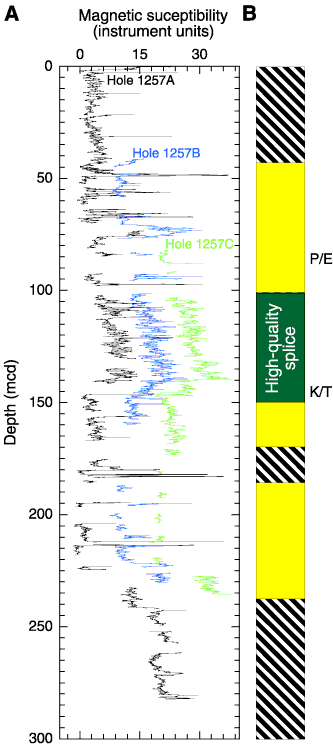
Figure F10. Magnetic susceptibility data plotted with a qualitative estimate of the confidence of the core-to-core correlations among holes at Site 1257. A. The composite data from Holes 1257A and 1257B are offset by a constant (5 and 10 units, respectively) for illustration purposes. All data sets are smoothed with a 9-point Gaussian filter. B. Green = interval with definitive hole-to-hole correlations and a high-quality splice (i.e., most core gaps spanned), yellow = intervals where core-to-core correlations could be made (i.e., a one-to-one match of signals between holes) but definitive depth positions could not be established because core gaps could not be spanned. In many cases, the poor core quality resulted in only short intervals in a single core having a high-quality signal for correlation (e.g., 180–240 mcd). Thus, correlated cores in the yellow intervals may only have a 1–2 m that have similar MST signals. Diagonal line pattern = intervals where hole-to-hole correlations could not be made (primarily a result of only one hole in that interval). P/E = Paleocene/Eocene boundary, K/T = Cretaceous/Tertiary boundary.



![]()